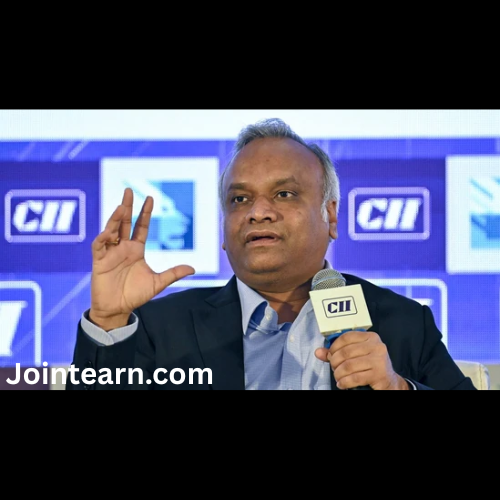The first phase of the Bihar Assembly elections 2025 commenced on Thursday morning at 7:00 AM, covering 121 of the state’s 243 constituencies. Voters in these constituencies turned out early, eager to exercise their democratic right amid intense political campaigning by major parties such as the Bharatiya Janata Party (BJP), Janata Dal (United) [JD(U)], and Rashtriya Janata Dal (RJD). While the polling process began smoothly in most areas, technical issues with electronic voting machines (EVMs) were reported at a few locations, causing brief disruptions.
The Election Commission of India (ECI) maintained that the glitches were promptly addressed and did not affect the overall voting process. Chief Electoral Officer Vinod Singh Gunjial confirmed that “very few reports of faults in EVMs” were received and that the issues were rectified immediately. Locations where faulty machines were reported included Darbhanga, Lakhisarai, Barh, Ara, and Agwanpur, highlighting the importance of contingency planning and technical preparedness in large-scale elections.
Voter Turnout and Early Polling Highlights
The first two hours of polling were closely monitored, with voter turnout figures scheduled to be released at 9:00 AM by the Election Commission. Across the 18 districts where phase-one polling took place, a total of 45,341 polling boothswere operational, of which 36,733 were located in rural areas. With over 37.5 million eligible voters participating in this phase, the scale of the exercise underscores the logistical complexity of conducting elections in India’s third-largest state.
Prominent political figures were among the early voters, drawing attention to the high-profile nature of these elections. Deputy Chief Minister and BJP leader Vijay Kumar Sinha, Union Minister Rajiv Ranjan Singh (Lalan Singh) of JD(U), and RJD leaders Tejashwi Yadav and Rabri Devi cast their votes in the initial hours. Their early participation is expected to set the tone for turnout in other constituencies throughout the day.
Contest Dynamics in Phase One
Phase-one constituencies have witnessed direct contests between the state’s key political rivals, reflecting the high stakes in this election. The BJP and RJD are facing off in 23 constituencies, with notable battles including Mangal Pandey (BJP) versus Awadh Bihari Choudhary (RJD) in Siwan and Vijay Kumar Sinha (BJP) against Arun Kumar (RJD) in Tarapu. In the Raghopur constituency, Tejashwi Yadav, the RJD leader and former Deputy Chief Minister, is seeking a third consecutive term, making this seat a significant indicator of the RJD’s strength in the region.
The JD(U) and RJD are in direct competition in 33 constituencies, while the JD(U) and Congress face off in approximately 10 seats. Smaller allies of the National Democratic Alliance (NDA) have fielded candidates against the RJD-led alliance in more than 30 constituencies, creating a multi-cornered electoral contest that could influence overall seat distribution. The distribution of candidates underscores the complex nature of Bihar politics, where regional alliances, caste dynamics, and local issues play a decisive role in election outcomes.
Technical Preparedness and EVM Concerns
The reports of EVM malfunctions in Darbhanga, Lakhisarai, Barh, Ara, and Agwanpur highlight the technical challenges inherent in conducting elections in a populous state like Bihar. The Election Commission assured voters that standby machines were available and that polling resumed without significant delays. The ECI’s rapid response to rectify the faults reflects the commission’s commitment to ensuring a smooth and transparent electoral process.
EVMs have become a focal point of attention in recent elections, often drawing scrutiny from political parties and civil society groups. While these machines are generally considered secure and efficient, even minor technical glitches can raise concerns among voters and party representatives. In Bihar’s phase-one elections, officials emphasized pre-deployment testing, real-time monitoring, and rapid response teams to mitigate any disruption to voting.
Key Electoral Issues and Voter Priorities
The 2025 Bihar assembly elections are being held against the backdrop of multiple economic, social, and governance challenges. Key issues shaping voter sentiment include agriculture, rural development, law and order, infrastructure, employment opportunities, and public welfare schemes. Political campaigns have focused heavily on promises of development, governance reforms, and the delivery of welfare benefits to vulnerable sections of society.
In rural constituencies, farmers’ concerns, particularly around irrigation, crop pricing, and input subsidies, remain central to electoral debates. In urban and semi-urban areas, voters are increasingly prioritizing infrastructure development, education, healthcare, and employment opportunities. Political parties have tailored their campaigns to address these diverse voter expectations, reflecting the socio-economic heterogeneity of Bihar.
Women’s Participation and Inclusivity
Among the 1,314 candidates contesting phase-one seats, 122 are women, indicating efforts toward greater gender representation in Bihar’s legislative assembly. Women’s participation as voters and candidates is being closely monitored, with initiatives to ensure accessible polling booths, security, and voter awareness campaigns aimed at enhancing their engagement in the democratic process.
Security Arrangements and Polling Protocols
Given the high stakes and the possibility of multi-cornered contests, security arrangements were robust across polling locations. Central and state police forces were deployed to maintain law and order, particularly in constituencies with historically sensitive electoral contexts. Measures included patrolling, crowd management, CCTV surveillance, and rapid response teams to address any contingencies.
The ECI also issued strict polling day guidelines to ensure free and fair elections, including directives on voter conduct, party campaigns, and monitoring by election observers. Party agents and observers were deployed to oversee polling, verify the functioning of EVMs, and ensure compliance with electoral norms.
Phase Two and Beyond
Phase-two polling for the remaining 122 constituencies is scheduled for November 11, 2025, with results for both phases to be declared on November 14, 2025. Analysts suggest that outcomes in phase one could provide an early indication of voter sentiment, alliance performance, and regional strongholds for various parties.
The staggered polling allows for strategic deployment of resources, candidate visits, and security arrangements in high-stakes constituencies. It also provides political parties an opportunity to recalibrate their campaigns based on early trends and voter feedback from the first phase.
Conclusion
The first phase of the Bihar assembly elections unfolded amid high voter enthusiasm, technical challenges, and intense scrutiny of party strategies. With prominent leaders casting their votes early and multiple direct contests between major parties, phase one has set the stage for a fiercely contested electoral battle.
While EVM glitches caused minor disruptions, the Election Commission’s prompt response ensured minimal impact on the overall polling process. The elections will not only determine the next government in Bihar but also reflect broader political trends, alliances, and public priorities in the state.
As voters continue to exercise their franchise in phase two, all eyes will remain on Bihar’s dynamic political landscape, where every constituency carries significant weight in shaping the future of governance, development, and political alignments in India’s eastern heartland.


Leave a Reply